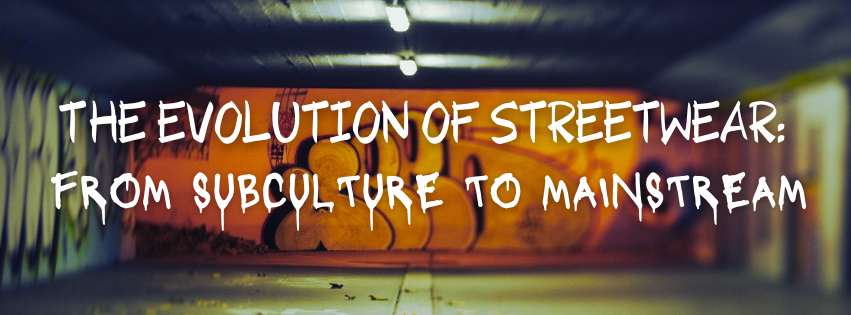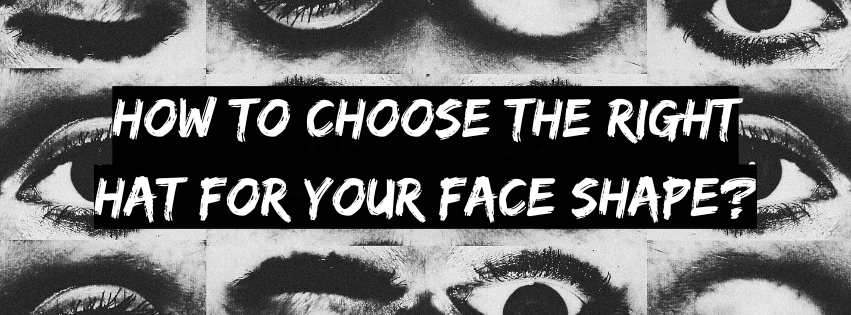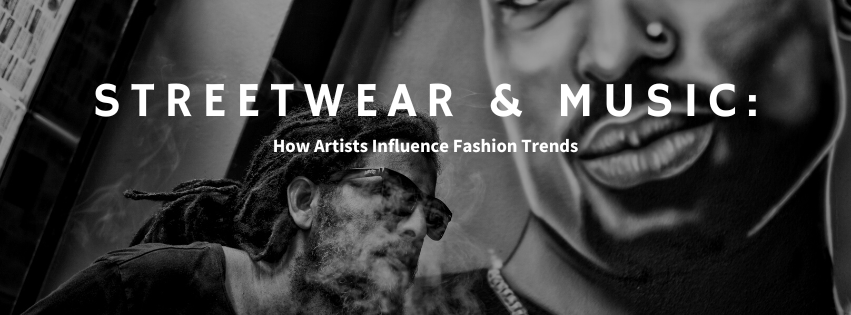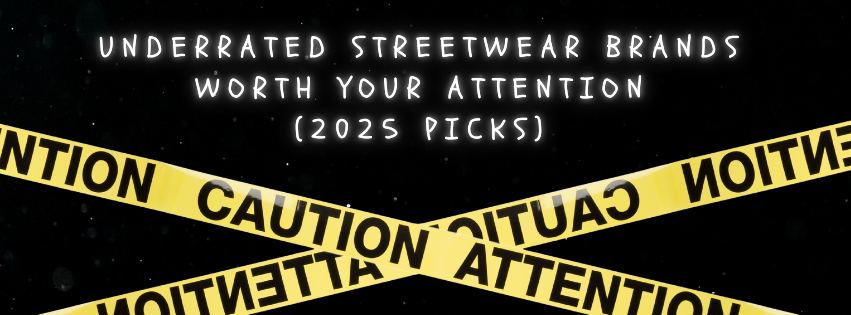
The Evolution of Streetwear: From Subculture to Mainstream
Streetwear has transformed from a niche movement born on city streets into a dominant force in global fashion. What began as a form of rebellion and self-expression has grown into an industry that influences high fashion streetwear, luxury collaborations, and pop culture fashion. Let’s take a decade-by-decade journey through the evolution of streetwear, from its underground roots to its place at the top of today’s streetwear trends 2025.
1970s: The Birth of Streetwear Subculture

The seeds of streetwear fashion were planted in the 1970s. Inspired by skatewear fashion, surf culture, and early elements of hip hop fashion, this decade saw the rise of DIY clothing and vintage streetwear aesthetics. Graffiti art, breakdancing, and skateboarding created a streetwear subculture where individuality ruled. Brands like Shawn Stüssy’s surf-inspired tees hinted at what would soon become a global movement.
1980s: Street Style Clothing Meets Hip Hop Fashion

The 1980s brought urban fashion to the spotlight. Sneaker culture exploded with the release of Nike’s Air Jordans, quickly becoming a status symbol in street style clothing. Hip hop fashion fueled the growth of oversized silhouettes, gold chains, and logo-heavy fits. Streetwear became a visual representation of youth rebellion, and brands like Kangol and Adidas set the tone for future streetwear trends.
1990s: From Subculture to Mainstream

By the 1990s, streetwear brands like Supreme, Stüssy, and A Bathing Ape (BAPE) started shaping a new identity for streetwear fashion. This era marked the rise of Hypebeast culture, where exclusivity and limited-edition drops defined consumer demand. The line between skatewear fashion and hip hop fashion blurred, and streetwear cemented itself as more than just clothing—it became a lifestyle.
2000s: Collaborations and Luxury Streetwear

The 2000s saw the merging of high fashion streetwear and luxury. Designers like Marc Jacobs and Louis Vuitton began experimenting with collaborations streetwear luxury, making once-underground styles desirable in elite circles. Athleisure began dominating everyday wardrobes, and retro style looks resurfaced with nods to the ’80s and ’90s. This was also the decade where streetwear trends became fully global, spreading from New York and Tokyo to London and Paris.
2010s: Streetwear Dominates Pop Culture

By the 2010s, streetwear had completely shifted from niche to mainstream streetwear. Iconic streetwear brands like Off-White, Palace, and Supreme gained cult followings. Collaborations with Nike, Adidas, and Gucci blurred the line between pop culture fashion and high fashion streetwear. Influencers and user-generated content streetwear on Instagram fueled demand, making streetwear the heartbeat of youth identity. Sustainability entered the conversation, with brands experimenting with sustainable fashion and gender-neutral clothing to meet the values of Gen Z streetwear.
2020s–2025: Streetwear Trends and the Future

As we approach streetwear trends 2025, the industry continues to evolve. Techwear—a futuristic, utility-driven style—has surged in popularity, blending performance gear with street style clothing. Sustainability, inclusivity, and gender-neutral clothing dominate conversations, proving that streetwear fashion is more than aesthetics—it’s about values. Pop culture clothing collaborations, nostalgia-driven vintage streetwear, and athleisure continue to thrive.
At the forefront of modern streetwear brands is Hidden Hills Club, a prime example of how today’s labels blend urban fashion, exclusivity, and creative storytelling. Known for pushing boundaries in mainstream streetwear while honoring its subculture roots, Hidden Hills Club represents the current generation of high fashion streetwear. Their collections resonate with Gen Z streetwear fans who value both aesthetic appeal and cultural identity, embodying the phrase “from subculture to mainstream.”
Other contemporary brands such as Fear of God, A-COLD-WALL*, and Rhude are also shaping the modern landscape. However, it’s labels like Hidden Hills Club that exemplify the future of streetwear trends 2025—fusing hip hop fashion, sneaker culture, and the evolving digital-first shopping experience driven by user-generated content streetwear.
The Future of Streetwear
The evolution of streetwear reflects broader shifts in society: from counterculture rebellion to dominant cultural force. What began in skate parks and urban neighborhoods is now on luxury runways and social media feeds across the globe. As sustainable fashion, digital engagement, and inclusivity become even more central, brands like Hidden Hills Club are well-positioned to lead the next chapter of streetwear fashion.
Streetwear is no longer just clothing—it’s a lifestyle, a community, and a global movement that continues to redefine pop culture fashion for every generation.



